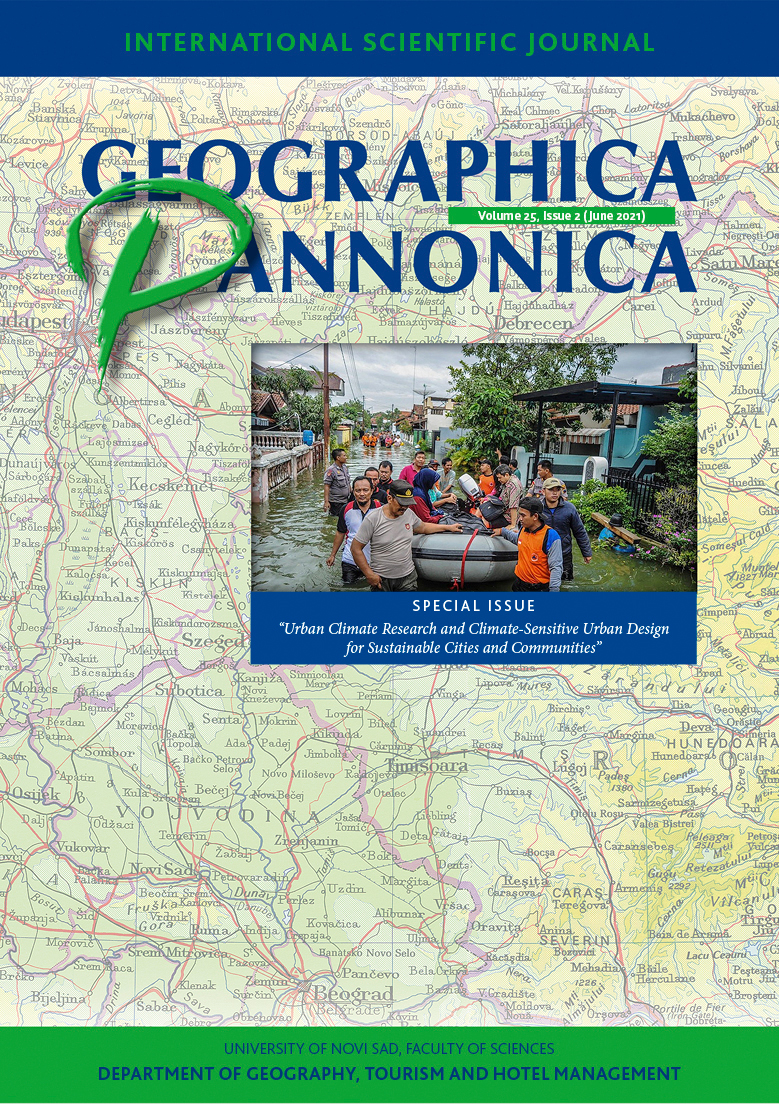The Relationship of Home Renovation and Gender at Suburban Housing of Semarang City in Indonesia
Abstract
The purpose of this study was to explore gender influence on home renovation based on family life cycle in suburban housing of Bukit Kencana Jaya Semarang, Indonesia. Sixty households were interviewed and the resulting data were analyzed using the mix method. This attempt is important to determine the gender roles and relations influencing housing demand policies. The result showed most renovation activities were conducted on families with children, in addition to formulating two deductions. First, insingle and newcouples, gender productive roles tend to support house function in terms of economic existence and societal perception. Second, in families with children and elderly, these utilities serve as a habitat for income sources and welfare support.
References
Agusniansyah, N., & Widiastuti, K. (2016). Konsep Pengolahan Desain Rumah Tumbuh [The Concept of Growing House Design]. Modul, 16(1), 1. https://doi.org/10.14710/mdl.16.1.2016.1-12
Andersen, H. S. (2011). Motives for tenure choice during the life cycle: The importance of non-economic factors and other housing preferences. Housing, Theory and Society, 28(2), 183–207. https://doi.org/10.1080/14036096.2010.522029
Clapham, D. (2009). Introduction to the special issue - A theory of housing: Problems and potential. Housing, Theory and Society, 26(1), 1–9. https://doi.org/10.1080/14036090802704445
Clark, W. A. V., & Onaka, J. L. (1983). Life Cycle and Housing Adjustment as Explanations of Residential Mobility. Urban Studies, 20(1), 47–57. https://doi.org/10.1080/713703176
Davey, J. (2006). “Ageing in Place”: The Views of Older Homeowners on Maintenance, Renovation and Adaptation. Social Policy Journal of New Zealand, (27), 128. Retrieved from https://www.msd.govt.nz/about-msd-and-our-work/publications-resources/journals-and-magazines/social-policy-journal/spj27/ageing-in-place-the-views-of-older-homeowners-27-pages128-141.html
Fischer, M., & Khorunzhina, N. (2014). Family Composition and the Optimal Deman for Housing over the Life Cycle. Copenhagen Business School. https://doi.org/10.3138/jcfs.12.3.365
Hasell, M. J., & Peatross, F. D. (1990). Exploring Connections Between Women’s Changing Roles and House Forms. Environment and Behavior, 22(1), 3–26.
Holmes, R., & Jones, N. (2010). Overseas Development Institute: Rethinking social protection using a gender lens. Odi.
Hwang, E., Cummings, L., Sixsmith, A., & Sixsmith, J. (2011). Impacts of home modifications on aging-in-place. Journal of Housing for the Elderly, 25(3), 246–257. https://doi.org/10.1080/02763893.2011.595611
Kandiyoti, D. (1988). Bargaining with Patriarchy. Gender and Society, 2(3), 274–290.
Karsten, L. (2007). Housing as a way of life: Towards an understanding of middle-class families’ preference for an urban residential location. Housing Studies, 22(1), 83–98. https://doi.org/10.1080/02673030601024630
Kaufman, G. (2000). Do gender role attitudes matter? Family formation and dissolution among traditional and egalitarian men and women. Journal of Family Issues, 21(1), 128–144. https://doi.org/10.1177/019251300021001006
Knodel, J., Loi, V. M., Jayakody, R., & Huy, V. T. (2005). Gender Roles in the Family. Asian Population Studies, 1(1), 69–92. https://doi.org/10.1080/17441730500125888
Martin-Matthews, A. (2007). Situating “home” at the nexus of the public and private apheres: Ageing, gender and home support work in Canada. Current Sociology, 55(2), 229–249. https://doi.org/10.1177/0011392107073305
Munro, M., & Smith, S. J. (1989). Gender and Housing: Broadening the Debate. Housing Studies, 4(1), 3–17. https://doi.org/10.1080/02673038908720639
Painter, G., & Lee, K. O. (2009). Housing tenure transitions of older households: Life cycle, demographic, and familial factors. Regional Science and Urban Economics, 39(6), 749–760. https://doi.org/10.1016/j.regsciurbeco.2009.07.006
Rotman, D. L. (2005). Newlyweds, young families, and spinsters: A consideration of developmental cycle in historical archaeologies of gender. International Journal of Historical Archaeology, 9(1), 1–36. https://doi.org/10.1007/s10761-005-5670-0
Safran-Norton, C. E. (2010). Physical home environment as a determinant of aging in place for different types of elderly households. Journal of Housing for the Elderly, 24(2), 208–231. https://doi.org/10.1080/02763891003757494
Sakina, A. I. (2017). Menyoroti Budaya Patriarki Di Indonesia (Investigating Patriarchy in Indonesia). Share: Social Work Journal, 7(1), 71. https://doi.org/10.24198/share.v7i1.13820
Shrestha, G. (2000). Gender Relations and Housing: A Cross-community Analysis. Gender, Technology and Development, 4(1), 61–86. https://doi.org/10.1080/09718524.2000.11909952
Soeharso, D., & Kusumowidagdo, A. (2016). Pengaruh Family Life Cycle Dalam Keputusan Memilih Desain Rumah Tinggal dan Lingkungan [Family Life Cycle Influence of Home and Environment Design Choice]. Jurnal Aksen, 1(2), 5–26.
Sullivan, O. (2004). Changing Gender Practices within the Household: A Theoretical Perspective. Gender and Society, 18(2), 207–222. https://doi.org/10.1177/0891243203261571
Tan, T. H. (2012). Meeting first-time buyers’ housing needs and preferences in greater Kuala Lumpur. Cities, 29(6), 389–396. https://doi.org/10.1016/j.cities.2011.11.016
Tjørring, L. (2016). We forgot half of the population! The significance of gender in Danish energy renovation projects. Energy Research and Social Science, 22, 115–124. https://doi.org/10.1016/j.erss.2016.08.008
Tupenaite, L., Zavadskas, E. K., Kaklauskas, A., Turskis, Z., & Seniut, M. (2010). Multiple criteria assessment of alternatives for built and human environment renovation. Journal of Civil Engineering and Management, 16(2), 257–266. https://doi.org/10.3846/jcem.2010.30
Wieringa, S. E. (1998). Rethinking gender planning: A critical discussion of the use of the concept of gender. Gender, Technology and Development, 2(3), 349–371. https://doi.org/10.1177/097185249800200301
Wu, F. (2010). Housing environment preference of young consumers in Guangzhou, China: Using the analytic hierarchy process. Property Management, 28(3), 174–192. https://doi.org/10.1108/02637471011051318

